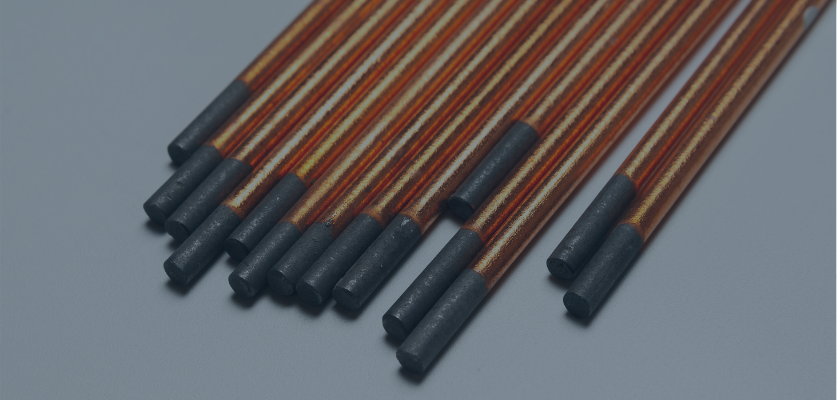Choosing the Best Electrode Material for EDM of Carbides
Electrical discharge machining (EDM) of carbides can, quite literally, be a rough business.
Determining the right set of parameters for job success can require time, attention, and careful fine tuning. And unless you have an excellent working relationship with your machine supplier support team made up of metal cutting specialists, you may have little luck there — especially if you’re working against the clock.
The choice of material used to make electrodes for processes such as resistance spot welding and die sinker EDM has a huge impact on the results that can be achieved, as well as on meeting production deadlines.
In a series of blogs, we discuss various ways in which choosing copper tungsten as an electrode material offers advantages for EDM. Here, we look at the impact of tungsten wear resistance on electrode efficiency — and why copper and tungsten make such a good combo.
What is wear resistance?
As the term implies, wear resistance is the ability of a tool (such as a spot welding or die sinker EDM electrode) to resist wear and tear under typical operating conditions. Wear resistance is affected by a number of factors, such as the speed of the machining process and the amount of heat it generates.
It’s fairly common knowledge that EDM of carbides is slow going, which in turn increases wear rates to a significant degree. So, when choosing an electrode, it’s crucial to know the wear resistance of the electrode material.
The wear resistance of an EDM electrode material is determined primarily by measuring end wear and corner wear:
- End wear is the amount of material burned away from the bottom of the material to the depth of the electrode to the cavity.
- Corner wear is a measure of the length lost of the 90-degree external corner of an electrode to the corresponding internal corner.
Together these measurements dictate how successfully a material will perform throughout the duration of use. So, how does copper tungsten stack up in terms of wear resistance?
What properties of tungsten improve wear resistance?
Because EDM is a thermal process, the higher the melting point of the electrode material, the better it can withstand the inherently high temperatures of the EDM process.
One of the many interesting facts about tungsten is that, at 6,191°F, it has the highest melting point of any metal. As such, tungsten offers truly unmatched thermal resistivity. Ultimately this translates to better corner wear rates.
Additionally, for applications where sharp corners and detailed cavities are a must, the composition of a copper tungsten electrode can be adjusted to include more tungsten to improve performance.
However, it’s important to be mindful of the fact that less copper in a copper tungsten electrode will mean slower cut rates.
What are the advantages of copper and tungsten together?
The structural integrity of copper makes it highly resistant to DC arcing in poor flushing conditions, allowing it to still produce very fine surface finishes. So, for smoother burning and better surface finish, electrode material compositions can include more copper.
Combining the thermal resistivity of tungsten with copper’s resistance to DC arcing makes for an electrode that can hold up in sharp corners and help prevent pitting for EDMing carbides.
By using copper tungsten electrodes for your carbide EDM applications, you can ensure production efficiency and cost savings resulting from the improved wear ratio of electrode-to-workpiece material.
To learn more about copper tungsten blanks for sinker EDM electrode applications, download our free white paper.






